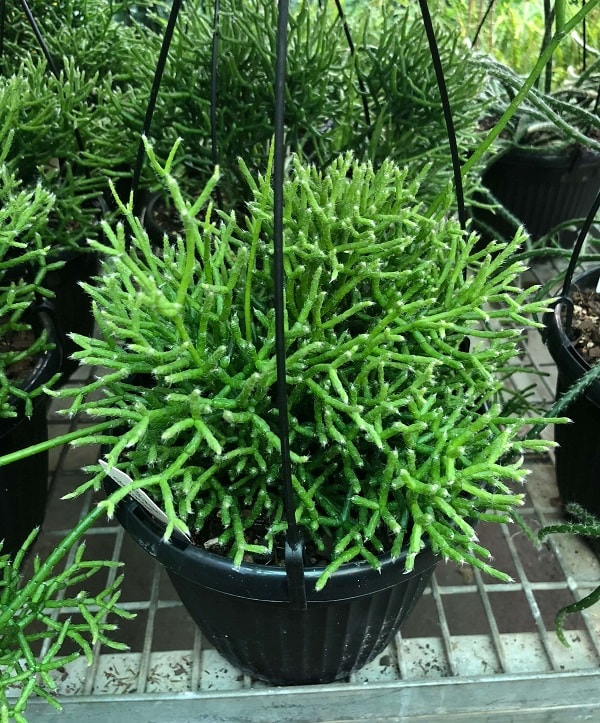Rhipsalis Cereuscula is an epiphytic cactus.
This plant reaches up to 60 cm long.
It belongs to the Cactaceae family and is native to South America and grows mainly in Argentina, Bolivia, and Brazil.
Plant characteristics
It forms small light green stems crowned with clusters of small joints in the form of “rice.”
Erected at the beginning, it acquires a pendant shape as the size increases.
Excellent for hanging baskets.
The flowers are small bell-shaped, white to pink, up to 1.5 cm long and up to 2 cm in diameter.
Tips to take care of the Rhipsalis Cereuscula
Substratum
The ideal substrate for planting your Rhipsalis Cereuscula is slightly acidic and well-drained.
A mixture composed of 1/3 of peat, 1/3 of special soil for pots and 1/3 of coarse sand.
At the bottom of the pot will make a bed of gravel or clay balls so that the water does not stagnate at the roots and thus protect the plant from water stagnation.
Temperature
Unlike other succulents, Rhipsalis Cereuscula enjoys a wetter atmosphere.
It is not resistant to cold, so if you live in an area where the temperature reaches more than 30 ° F (-1.1 ° C), it is better to plant this succulent in a container that can be carried inside.
It is also important that no matter where the plant (inside or outside your home) do not put it in a place where it receives direct sun, as this can damage the leaves.
Transplant
If you see that your Rhipsalis Cereuscula needs to be transplanted from a pot, it should be done after flowering of the plant.
Pests
During the summer, if the air is too dry, it can be attacked by the red spider or the cottony mealybugs.
Maintain high humidity.
Illumination
Rhipsalis Cereuscula should be a partial shade plant. If the Rhipsalis Cereuscula receives direct light, its leaves may burn, so partial shade is better.
Prune
Rhipsalis Cereuscula need not be pruned.
Only if, due to the sun or pests, any of its leaves are damaged, otherwise you should only cut the leaves that are battered so that the plant looks more aesthetic and does not harm the other leaves.
Multiplication
At the end of the spring, carefully cut a stem with root, let the cutting rest for 2 or 3 days before planting it, and then sow the cutting in a pot with a substrate with good drainage and water the plant when the substrate is totally dry.
Irrigation
Rhipsalis Cereuscula needs high humidity and consequent irrigation especially in times of growth. Water abundantly once or twice a week with non-calcareous water.
In winter, reduce the frequency of irrigation. Never leave excess water in the pot and let the substrate dry completely between watering and watering.

1 thought on “Rhipsalis Cereuscula”
Comments are closed.